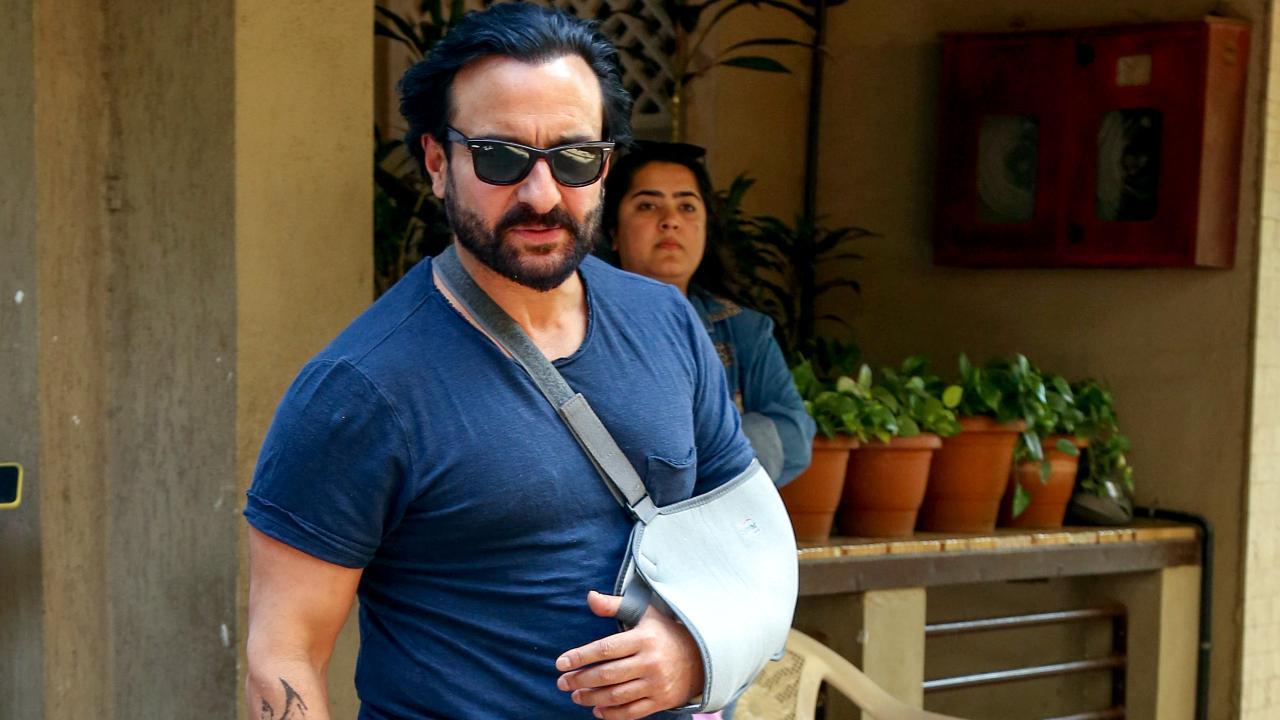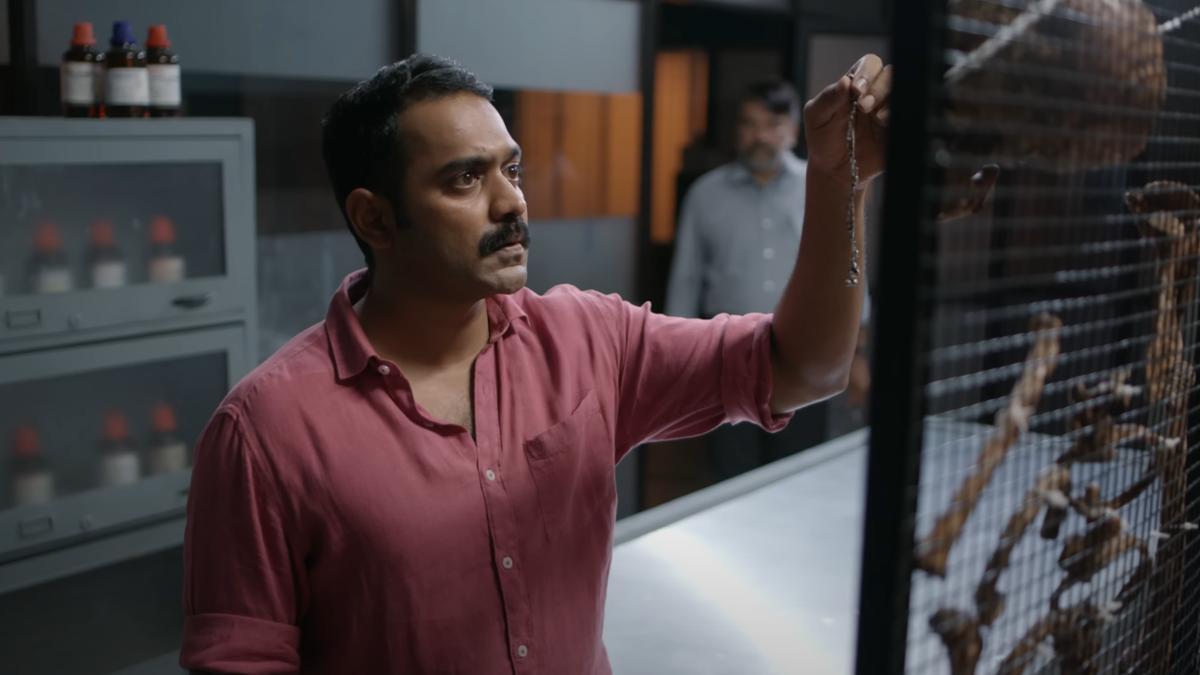
The unique rock formations of Hyderabad, some of the oldest in the world, are a marker of home for most Hyderabadis, says filmmaker Uma Magal, who grew up in the city.
“Hyderabad has always had such stunning rocks,” she says. “And any Hyderabadi you speak to will say that first sight of rocks give you the feeling that you’re home,” says Dublin-based Magal, the director of Other Kohinoors: The Rocks of Hyderabad, which will be screened in NGMA, Bengaluru, on November 13, and be accessible on YouTube after November 10.
Golconda Rock Fort from Fakhruddingutta rocks.
| Photo Credit:
SPECIAL ARRAGEMENT
And yet, like many other urban centres, the city fights to retain its cultural and natural heritage, including its geology, in the face of rampant development. Hyderabad’s rocks, many of which were formed nearly 2.5 billion years ago, are being lost overnight, blasted, bulldozed and shattered to make way for apartment complexes and villas. Magal, while living in Hyderabad’s Gachibowli area in the early 2000s, says that she saw the rocks disappearing before her eyes. “I was in Hyderabad when my children were small,” she says, recalling how, like other parents in the colony, she would take her children to the rocks for picnics, rock walks and bouldering sessions. “They loved it,” she says.
However, in the decade that her children were growing up in Hyderabad, between 2007 and 2012, the rocks slowly began to disappear. “Hyderabad is a vibrant, modern, developing city, and we need infrastructure. I understand that and am not against it,” she says. “But all the rocks went.”
The grief she encountered at the loss of these rocks, an intrinsic aspect of the city she calls home, is channelled into Other Kohinoors: The Rocks of Hyderabad, a film that is both nostalgia and celebration. “I tried, very deliberately, not to lay blame or point fingers at anyone,” she says. “My goal was to make other Hyderabadis join this conversation and help to build a citizen voice.”
Cartoon on rocks.
| Photo Credit:
SPECIAL ARRAGEMENT
Magal says that the idea for the film emerged around 12 years ago as a small project for the children of the colony she lived in, who were very upset by the disappearing rocks. “I thought since I know this medium, I could make one small five-minute film, show it and talk through the grief they were going through,” she says. “That is how it started.”
Around this time, she also met an old friend and fellow Hyderabadi, Mahnoor Yar Khan. “She loves the rocks as much as I do,” says Magal, who told Khan about the film and also asked Khan to join her. Khan, who became the film’s co-producer, promptly agreed, and the duo began researching. It went on for many years. “I just went berserk…wanted to know more and more,” says Magal, who did a lot of reading and interviewed experts in the city as part of this research. “During the process, you discover yourself, your city, your people, your culture,” she says. “It was just wonderful.”
The wealth of information she collected also meant that they couldn’t resist making a longer film, says Magal, who began shooting in 2013, a process which went on for many years, “so we got that feeling of a city transitioning.”
She thinks of the film, formally released in September 2022 at PVR IMAX in Hyderabad, as a “labour of love”, one that was supported and encouraged by the larger community. “So many Hyderabadis have contributed to this film in one way or another, whether with encouragement, actual hard cash during our crowdfunding sessions or giving us various things, including their talent,” she says.
Since then, the film has been screened all over the city, in some 200-300 schools, colleges, cafes, government organisations. It has also been showcased at multiple film festivals, garnering accolades wherever it has gone. “People have said that they never knew all this…that they are seeing Hyderabad in a whole new light. That is one of the best responses,” says Magal, who hopes to get educators to make the film part of the school curriculum and continue the outreach film screenings both within Hyderabad and outside of it. “I had thought I would stop after two years. But I realised I could not since there was still too much momentum. And so we’ll keep going,” she says.
Other Kohinoors: The Rocks of Hyderabad offers its viewers multiple ways of seeing rocks: as a link to the landscape’s prehistoric past, home to local biodiversity and a cultural lodestar that has inspired the food, mythology, art, textile tradition and literature of the land. “We wanted to show how the culture honours this landscape… shows so much affection, gratitude and respect for the landscape,” says Magal.
In keeping with this idea, the 48-minute documentary is a vivid visual experience, with live-action long shots and closeups of Hyderabad’s stunning boulder-strewn geology segueing into artistically-executed animations that draw from local craft forms such as shadow puppetry, cheriyal paintings, bidri and Deccan miniature paintings. Tying it all together is a multilingual, quirky rap number that offers multiple insights into the city’s rocks, a stand-in for a typical voice-over. “It was a deliberate choice,” says Magal, who says that they had not wanted to make a documentary with an omnipotent narrator telling an audience what to think or see. “I was clear from the start that I wanted to entertain as well as educate. The goal was to keep people informed by feeling it.”
While the tussle between development and preservation may be inevitable, Magal firmly believes — something that comes out in the film, too — that there are many things one can do to preserve the rocks that have played a significant part in shaping Hyderabad’s culture, heritage and history. She says one way to do this is by retaining rocks during construction. “Whenever a new colony is made, they should leave the rocks so the children know what this landscape is,” she says.
Some other suggestions she makes include holding a festival to celebrate Hyderabad’s rock culture, honouring the Wadar community, which knows these rocks better than anyone else, and creating geo parks in the city. “We always keep in mind that we must balance development with the natural heritage that we’ve been blessed with,” says Magal, who equates the rocks to the Kohinoor diamond, which was believed to have been mined from this same Deccan region in the Krishna Basin. “Of course, we know that the Kohinoor is precious. But these are also real jewels that we’re blessed with and are as precious as that one.”
Other Kohinoors: The Rocks of Hyderabad will be screened in NGMA, Bengaluru, on November 13.
Published – November 06, 2024 09:00 am IST










